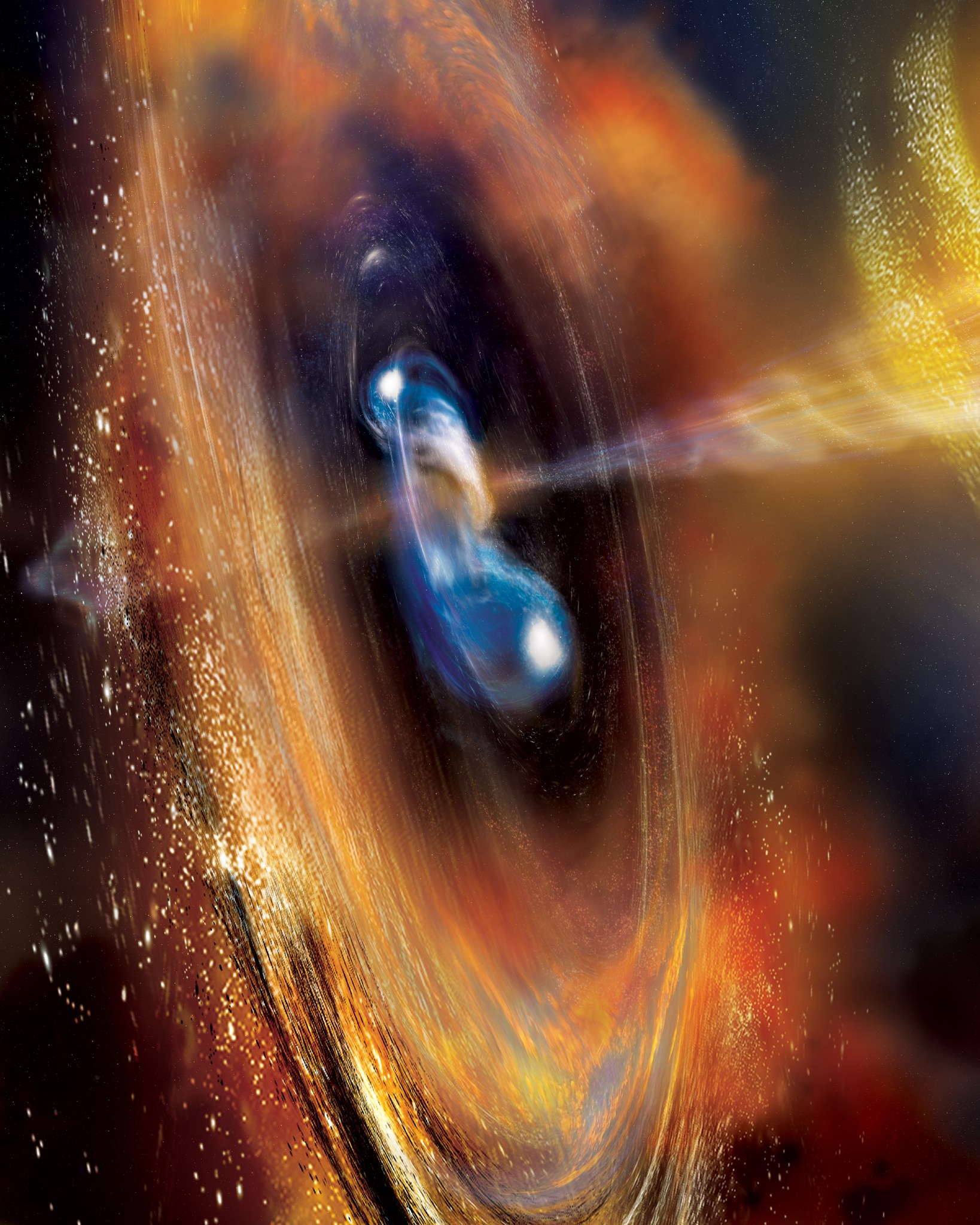Two neutron stars begin to merge in this illustration, blasting a jet of high-speed particles and producing a cloud of debris. These gamma-ray bursts (GRBs) are the most powerful events in the universe. Scientists think these kinds of events are factories for a significant portion of the universe’s heavy elements, including gold. They based their estimates on the rate of short burst GRBs thought to occur across the cosmos, but a Dec. 11, 2021, discovery showed they’ll need to factor long bursts into their calculations as well.
For the last few decades, astronomers have generally divided GRBs into two categories. Long bursts emit gamma rays for two seconds or more and originate from the formation of dense objects like black holes in the centers of massive collapsing stars. Short bursts emit gamma rays for less than two seconds and are caused by mergers of dense objects like neutron stars.
Learn more during Black Hole Week.
Image Credits: Sonoma State Univ./A. Simonnet; NASA



























